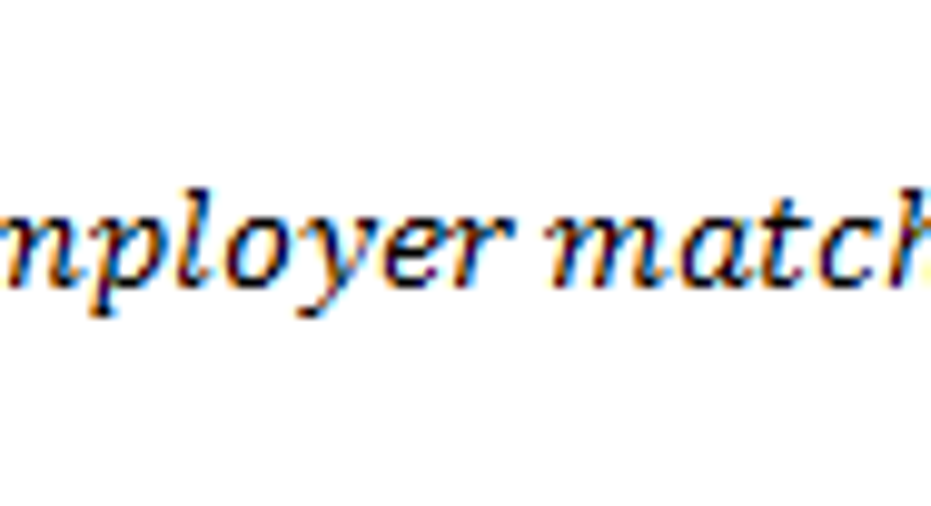How to Calculate the Employer Match in a 401(k)

A 401(k) plan is the most popular type of employer-sponsored retirement plan offered in the private sector, and most employers who offer a 401(k) offer some sort of matching program. If you're curious about how much you can expect your employer to contribute to your 401(k) this year, here's how you can find out.
Calculating the employer matchMost employees contribute to their 401(k) as a percentage of their salary. 6% seems to be a common number, but it can be anything. So the first thing you need to do is find out your contribution rate if you don't already have that information handy.
Next, find out how much your employer is willing to match. Some match dollar-for-dollar up to a certain percentage of your salary, and others match a certain percentage of your contributions up to a limit. For example, your employer may say that it matches "50% of employee contributions of up to 6% of salary."
Apply the lesser of your contribution rate or your company's maximum matching percentage to your salary (convert to a decimal first). If your employer has a multiplier, like the 50% discussed in the previous paragraph, apply that as well.
As an example, let's say that your salary is $75,000 and your employer is willing to match your contributions dollar-for-dollar up to 5% of your salary. And we'll say that you contribute 10% of your salary. Since 5% is the lesser of the two contribution rates, we'll apply that to your salary. And since the match is dollar-for-dollar, there is no need to multiply by a matching percentage.
Maximum 401(k) contribution amountsIt's also important to note that there are maximum contribution amounts, which may limit the amount you can defer into your 401(k) or your employer's matching contributions. This is especially true if you are a high-income worker, or if your employer has a particularly generous matching program.
For the 2016 tax year, individuals can choose to have up to $18,000 of their salary deferred into their 401(k), and an additional $6,000 "catch-up" contribution is allowed for employees over 50. For an example of why this is relevant, let's say that you're 40 and are paid $200,000 per year. If you elect to defer 10% of your salary into your 401(k), it would result in $20,000 in contributions -- $2,000 above the allowed limit.
The total contribution limit -- including elective deferrals, mandatory contributions, and employer matching is $53,000, or $59,000 for those over 50. So if your or your employer's contributions exceed these limits, it will reduce the amount of the contributions you calculated earlier.
This article is part of The Motley Fool's Knowledge Center, which was created based on the collected wisdom of a fantastic community of investors. We'd love to hear your questions, thoughts, and opinions on the Knowledge Center in general or this page in particular. Your input will help us help the world invest, better! Email us atknowledgecenter@fool.com. Thanks -- and Fool on!
The article How to Calculate the Employer Match in a 401(k) originally appeared on Fool.com.
Try any of our Foolish newsletter services free for 30 days. We Fools may not all hold the same opinions, but we all believe that considering a diverse range of insights makes us better investors. The Motley Fool has a disclosure policy.
Copyright 1995 - 2016 The Motley Fool, LLC. All rights reserved. The Motley Fool has a disclosure policy.



















